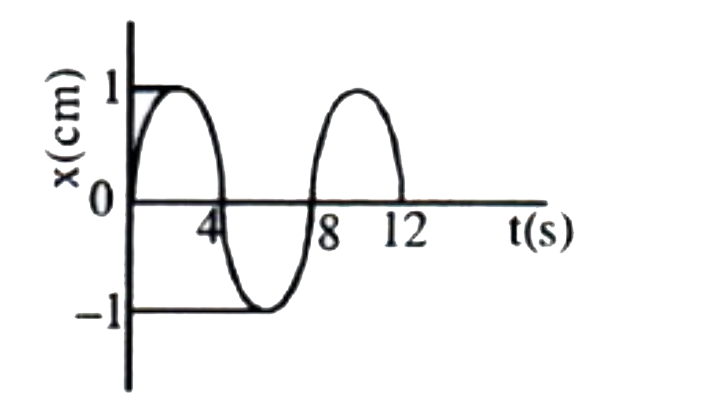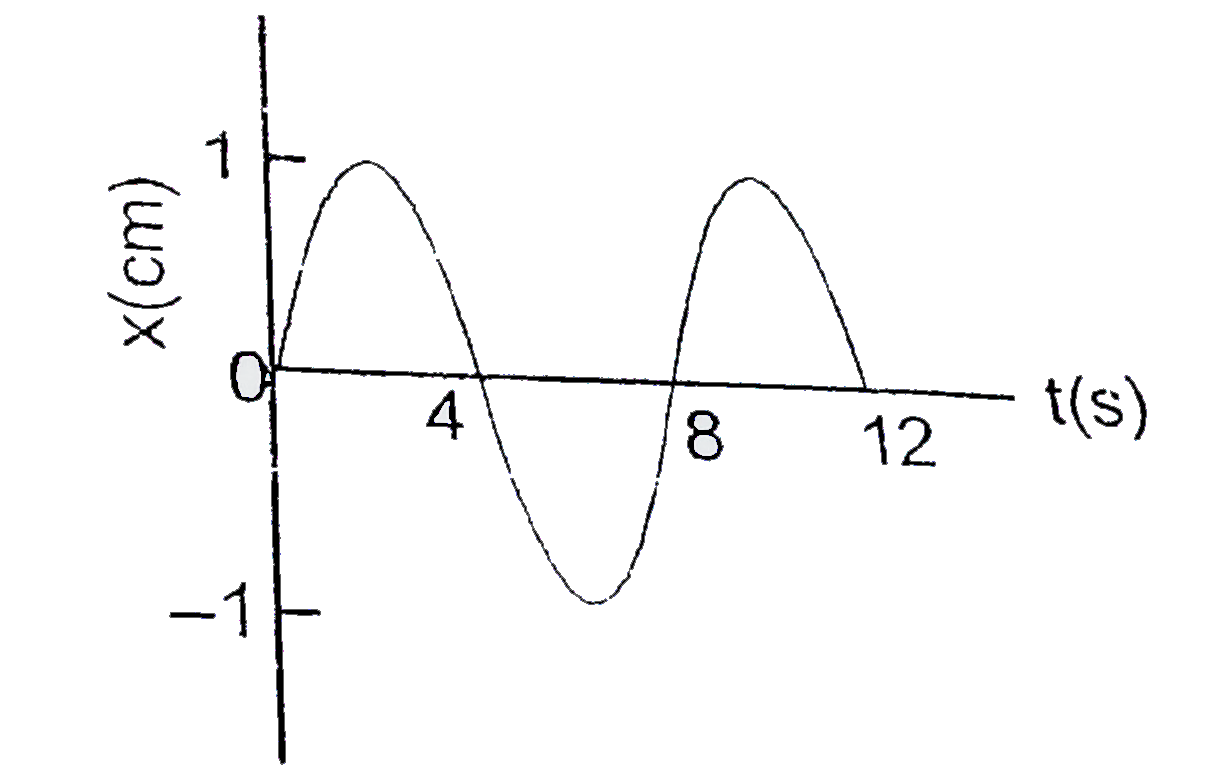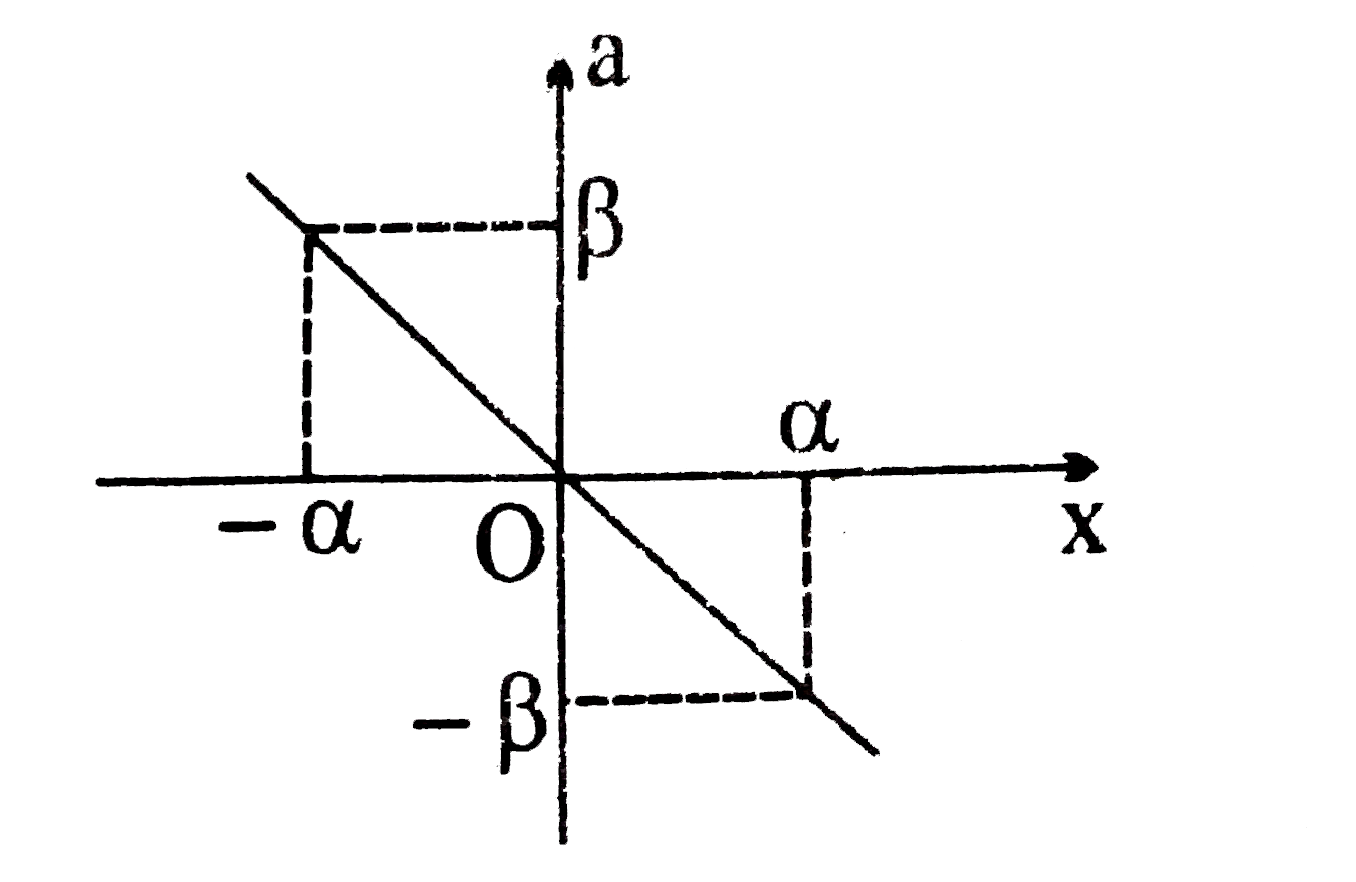Values of the acceleration A of a particle moving in simple harmonic motion as a function of its displacement x are given in the table below.
∣∣∣A(mms−2)1680−8−16x(mm)−4−2024∣∣∣
The pariod of the motion is
1πs
2πs
π2s
πs
The correct Answer is:D
To find the period of the motion for a particle moving in simple harmonic motion (SHM) based on the given acceleration and displacement values, we can follow these steps:
1. Understanding the relationship between acceleration and displacement:
In simple harmonic motion, the acceleration A is related to the displacement x by the equation:
A=−ω2x
where ω is the angular frequency.
2. Using the given data:
We have the following values from the table:
- When x=−4mm, A=16mm/s2
- When x=−2mm, A=8mm/s2
- When x=0mm, A=0mm/s2
- When x=2mm, A=−8mm/s2
- When x=4mm, A=−16mm/s2
3. Choosing a pair of values:
Let's use the first pair where A=16mm/s2 and x=−4mm:
16=−ω2(−4)
4. Solving for ω2:
Rearranging the equation gives:
16=4ω2
Dividing both sides by 4:
ω2=164=4
5. Finding ω:
Taking the square root of both sides:
ω=√4=2rad/s
6. Calculating the period T:
The period T is given by the formula:
T=2πω
Substituting the value of ω:
T=2π2=πseconds
7. Conclusion:
Therefore, the period of the motion is:
T=πseconds
Final Answer:
The period of the motion is π seconds.
In simple harmonic motion, the acceleration A is related to the displacement x by the equation:
A=−ω2x
where ω is the angular frequency.
We have the following values from the table:
- When x=−4mm, A=16mm/s2
- When x=−2mm, A=8mm/s2
- When x=0mm, A=0mm/s2
- When x=2mm, A=−8mm/s2
- When x=4mm, A=−16mm/s2
Let's use the first pair where A=16mm/s2 and x=−4mm:
16=−ω2(−4)
Rearranging the equation gives:
16=4ω2
Dividing both sides by 4:
ω2=164=4
Taking the square root of both sides:
ω=√4=2rad/s
The period T is given by the formula:
T=2πω
Substituting the value of ω:
T=2π2=πseconds
Therefore, the period of the motion is:
T=πseconds
The period of the motion is π seconds.
Topper's Solved these Questions
- SIMPLE HARMONIC MOTIONBOOK - ALLENCHAPTER - SIMPLE HARMONIC MOTIONEXERCISE - SOME WORKED OUT EXAMPLES
29 Videos
- SIMPLE HARMONIC MOTIONBOOK - ALLENCHAPTER - SIMPLE HARMONIC MOTIONEXERCISE - Exercise-01
117 Videos
- RACEBOOK - ALLENCHAPTER - RACEEXERCISE - Basic Maths (Wave Motion & Dopplers Effect) (Stationary waves & doppler effect, beats)
24 Videos
- TEST PAPERBOOK - ALLENCHAPTER - TEST PAPEREXERCISE - PHYSICS
4 Videos
Similar Questions
Knowledge Check
The displacement of a particle executing simple harmonic motion is given by y=4sin(2t+ϕ). The period of oscillation is
A2/πBπ/2CπD2π
The x-t graph of a particle undergoing simple harmonic motion is shown below. The acceleration of the particle at t=23s is

View SolutionThe x−t graph of a particle undergoing simple harmonic motion is shown below. The accelertion of the particle at t=4/3s is

View SolutionThe acceleration-displacement (a−X) graph of a particle executing simple harmonic motion is shown in the figure. Find the frequency of oscillation.

View SolutionThe maximum speed and acceleration of a particle executing simple harmonic motion are 10 cm s^-1 and 50 cms^-2. Find the position of the particle when the speed is 8cms^-1.
View Solution(a) The motion of the particle in simple harmonic motion is given by x=asinωt. If its speed is u, when the displacement is x1 and speed is v, when the displacement is x2, show that the amplitude of the motion is
A=[v2x21−u2x22v2−u2]1/2
(b) A particle is moving with simple harmonic motion is a straight line. When the distance of the particle from the equilibrium position has the values x1 and x2 the corresponding values of velocity are u1 and u2, show that the period is
T=2π[x22−x21u21−u22]1/2
View SolutionFor a particle which is undergoing simple harmonic motion, the square of velocity v2 is plotted against the square of displacement x2. The curve will be
View SolutionThe maximum velocity of a particle, excuting simple harmonic motion with an amplitude 7mm, is 4.4m/s The period of oscillation is.
View Solution

